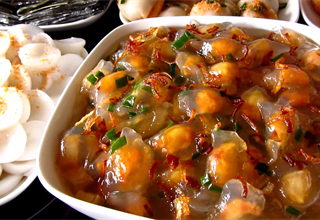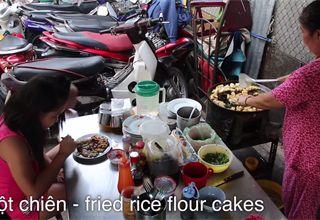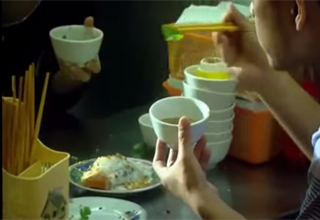Hanoi has a long-established reputation as a land of good food with a collection of specialties like bun cha (vermicelli and grilled chopped meat), pho (beef noodle soup), and bun oc (snail noodle soup).
But the charming 1000-year-old city has more than just a few noodle soups to offer gastronomes.
Generations of Hanoian women have been passing down the secret of making an elaborate noodle soup called bun thang (mixed soft noodle soup) to their family members.
Bun thang is known for its sweet, light taste derived from pork bone stock and a mix of toppings made from fried eggs, pork, chicken, mushroom, and others.
Making the soup is a painstaking process requiring the use of more than a dozen ingredients including chicken meat, pig bones and meat, eggs, dried shrimp, lean pork paste, shrimp paste, onion, mushroom, and belostomatid essence.
Bun thang broth, the basic ingredient to create the distinct sweet and light taste of the dish, is made by boiling a mix of chicken, dried prawns, and pig bones. Grilled onions and gingers are added to this stock to add flavor.
The result is a clear, sweet broth that does not have the unpleasant odor of pig bones.
But to achieve this, one must stay near the boiling pot to remove all impurities created during the process. The broth should remain on boil right up to the time of serving.
The making of bun thang toppings is also a time-consuming process. Fried eggs are sliced into strips while boiled chicken meat is shredded and sliced pork pie is cut into thin strips.
Soft noodle is placed in a bowl before the remaining space is filled with the toppings including egg strips, shredded chicken meat and skin, sliced pork pie, mushrooms, fluffy shredded sea shrimp, and sliced salted radish.
The ingredients are not mixed together but arranged so that each of them occupies a corner of the bowl.
A touch of green in the form of coriander and parsley is added after the boiling hot broth is poured into the bowl.
But the broth and the toppings alone are not enough to conjure up the mouth-watering taste of bun thang -- a little shrimp paste and belostomatid essence extracted from a kind of beetle are needed to spice it up.
But because of the hard work required to make it, bun thang only appears on the dining table on some special occasions.
The noodle soup is often served on the fourth and fifth days of Tet, the Lunar New Year, when people have grown tired of sumptuous, high-calorie dishes like banh chung (square glutinous rice cake), spring rolls, and pork pie.
Source: TT

















COMMENTS